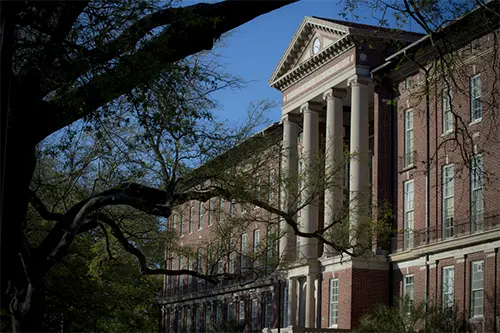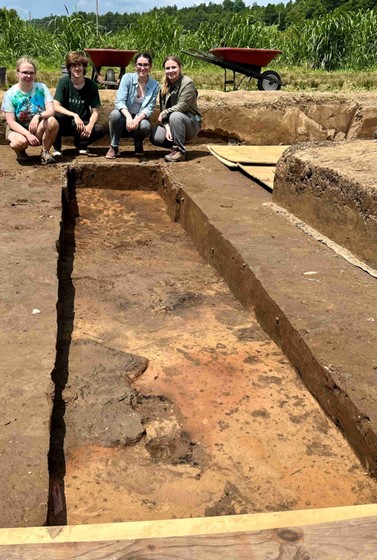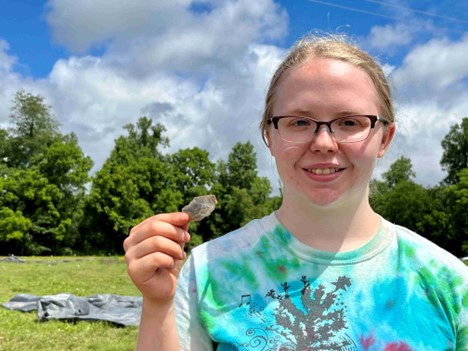Faculty in the Field: Chris Rodning
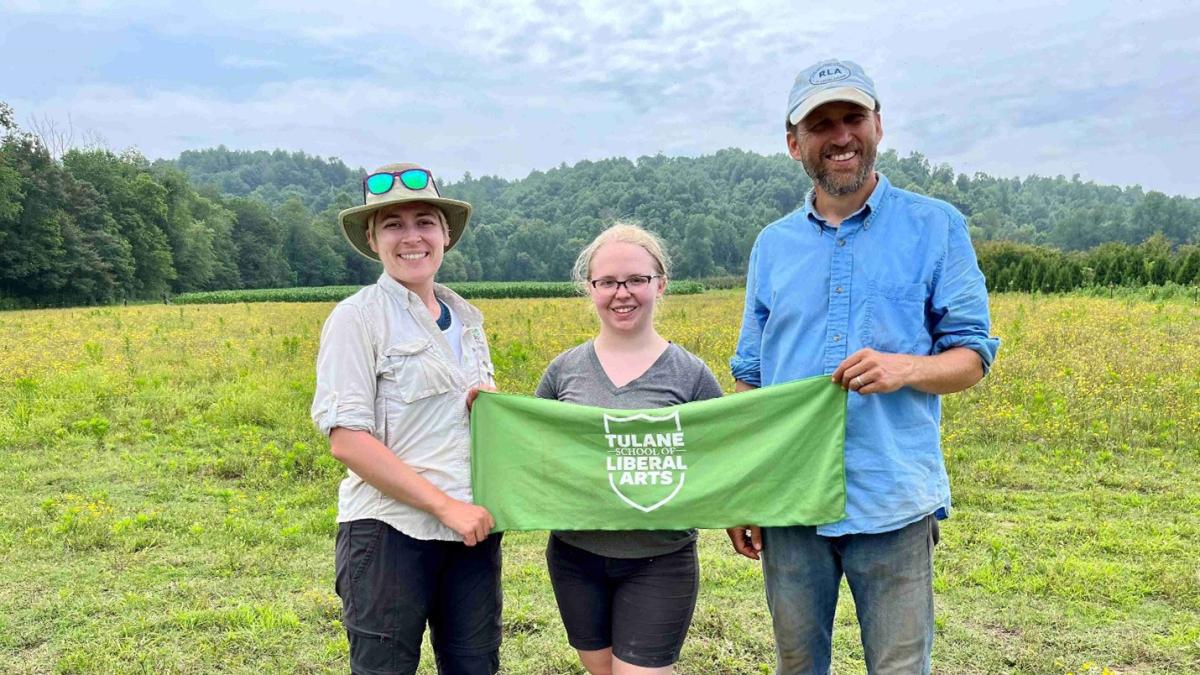
From left to right: Michelle Pigott (PhD candidate in anthropology), Lauren Duncan (SLA Class of 2025), and Professor Chris Rodning at the Berry site in western North Carolina.
Tuesday, September 13, 2023
This excerpt was written by Anthropology Professor Chris Rodning, who teaches courses on North American archaeology, culture contact and colonialism, and the archaeology of cultural landscapes.
There is an archaeology proverb from David Hurst Thomas that says: “it’s not what you find, it’s what you find out” about what life was like for people in the past.
As I have done in most summers since 2001, I codirected excavations at the Berry site in the Catawba River Valley of North Carolina. The site is the location of an ancestral Catawba town known as Joara and a Spanish colonial town (Cuenca) and fort (Fort San Juan) that dates from 1566 to 1568. This project concentrates on the interactions between Native American groups and early Spanish colonists during a period that predates the English colonization of Virginia and the French colonization of Louisiane.
This summer I was joined by two School of Liberal Arts students—PhD candidate Michelle Pigott and junior Lauren Duncan, a triple major in Anthropology, History, and English.
Michelle, whose dissertation research focuses on the Indigenous cultural landscape in which Joara and Cuenca were situated, was particularly focused on excavating a trench to determine the placement and dimensions of earth-and-wood structures associated with the Native American occupation of the site in an area outside of and near the archaeological footprint of the Spanish fort.
Lauren, participating in archaeological fieldwork for the very first time, was involved in excavating a trench within a structure to expose floors and the hearth (fireplace) at its center. This involved lots of dirt and required careful measurement of its volume, screening it with water to recover small materials, and preparing vertical (stratigraphic) profiles and horizontal (planview) surfaces in order to record findings through photography and drawings.
With these students and others who are also studying archaeological sites not far from Tulane’s campus, we are finding out what we can about the cultural heritage of the Native American South
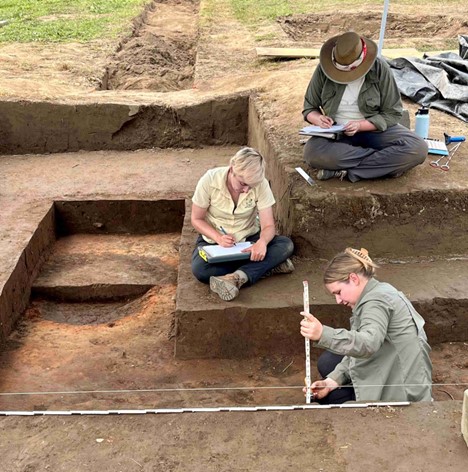
PhD candidate Michelle Pigott (left) drawing maps and stratigraphic profiles of an excavation trench, along with McKenna Connell (front right) and Rachel Briggs (back right). Left of Michelle is a hearth at the center of a Native American structure at the Berry site in western North Carolina. Rachel is a faculty member at the University of North Carolina and a project codirector. McKenna is a field school student from the University of Michigan.

